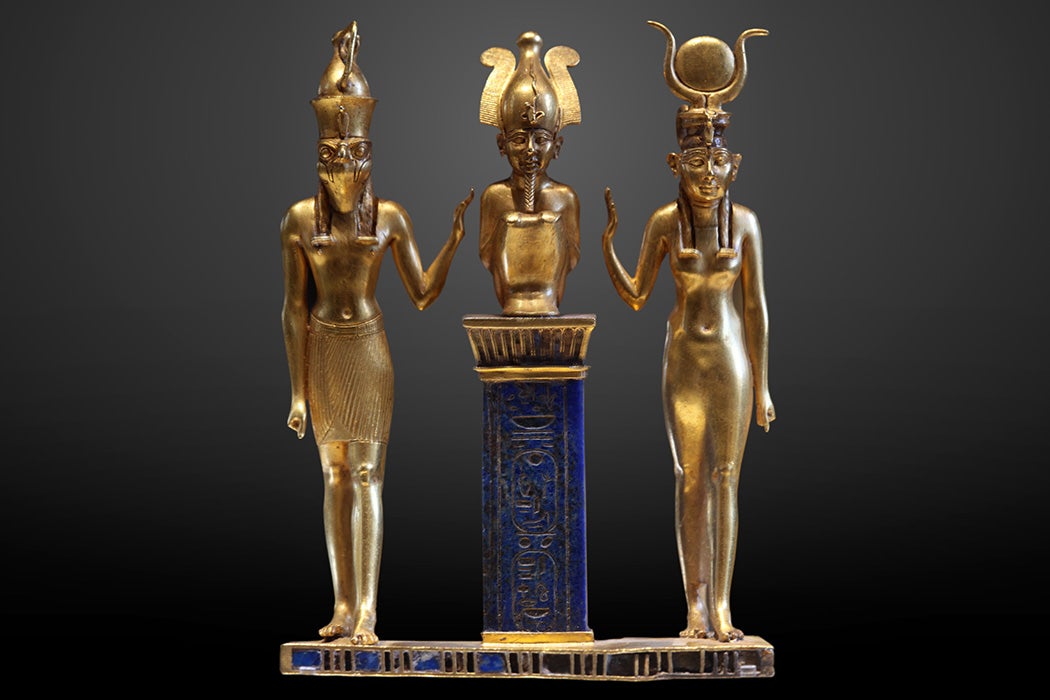Ancient Egyptian creation myths are the ancient Egyptian accounts of the creation of the world. The Pyramid Texts, tomb wall decorations and writings, dating back to the Old Kingdom (2780–2250 BC) have given us most of the information regarding early Egyptian creation myths. These myths also form the earliest religious compilations in the world. The ancient Egyptians had many creator gods and associated legends. Thus, the world or more specifically Egypt was created in diverse ways according to different parts of the country. Some versions of the myth indicate spitting, others masturbation, as the act of creation. The union between the first divine couple brought forth another brother-sister pair, Geb and Nut, who in turn created Osiris, Isis, Seth and Nephthys. An extension to this basic framework was the Osiris myth involving god, his consort Isis, and their son Horus. The murder of Osiris by Seth, and the resulting struggle for power, won by Horus, provided a powerful narrative linking the ancient Egyptian ideology of kingship with the creation of the cosmos.
In all of these myths, the world was said to have emerged from an infinite, lifeless sea when the sun rose for the first time, in a distant period known as zp tpj (sometimes transcribed as Zep Tepi), "the first occasion". Different myths attributed the creation to different gods: the set of eight primordial deities called the Ogdoad, the self-engendered god Atum and his offspring, the contemplative deity Ptah, and the mysterious, transcendent god Amun. While these differing cosmogonies competed to some extent, in other ways they were complementary, as different aspects of the Egyptian understanding of creation. SOURCE: Wikipedia
According to modern historians, the earliest dynasty of Egypt began with the reigns of the proto-dynastic pharaoh Narmer or perhaps his predecessor King Scorpion who united the two lands of Upper and Lower Egypt around 3,100 BCE. The ancient Egyptians, however, saw their origins in the mythic Tep Zepi—the “first time”—believed to be the golden age when the gods lived upon the earth. Was the Tep Zepi a distant memory of their prehistoric ancestry?
Alternative historian Robert Bauval in his book Black Genesis: The Prehistoric Origins of Ancient Egypt argues that Egypt grew out of a sophisticated African civilization that existed for millennia prior to the civilization of the pharaohs. This theory is not new—it was first proposed by 19th century European explorers as well as the eminent Egyptologist Sir Wallis-Budge in 1911 who wrote that the religion of ancient Egypt was derived from the indigenous peoples of Northeastern and Central Africa.
Budge found numerous similarities between ancient Egyptian and modern African religion and magic: ancestor worship, veneration of animals and cattle, funerary customs, pantheons of gods, use of fetishes, etc. He reasoned that since many of the African tribes he surveyed had probably never had contacts with the Egyptians, cultural influences must have originated with them and spread north up the Nile. Budge’s colleagues dismissed his theory as impossible, instead espousing the theory that invading Caucasoids conquered Egypt and founded the first dynasties. SOURCE: TreeofVisionsThe three main human races are: Caucasian (Causasoids), Mongoloids (Chinese, Japanese, Korean and Native American), and Negroid. Minor human races are: Capoids and Pacific races (Aborigines, Polynesians, Melanesians, and Indonesians).




